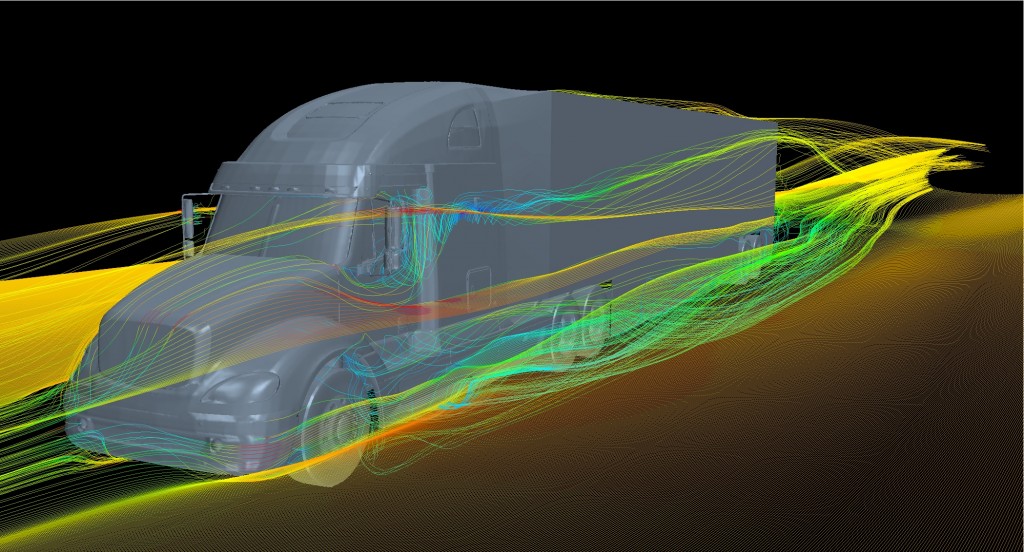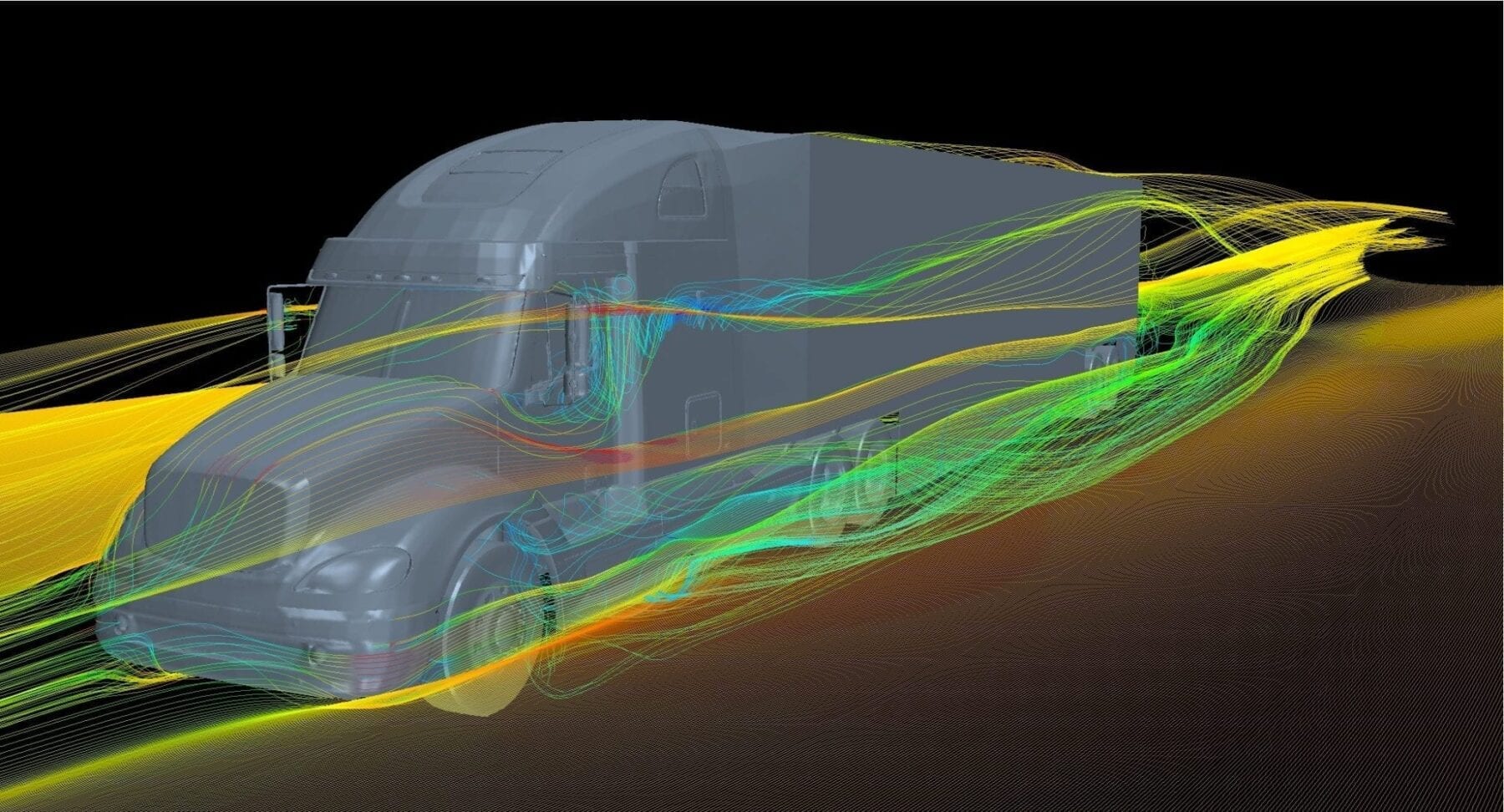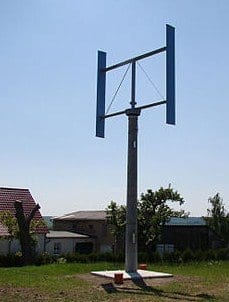
Scientists at Lawrence Livermore National Laboratory study potential of drag-reducing devices on semi-trucks to conserve billions of gallons, save tens of billions of dollars and spare tens of millions of tons of CO2
Each year, the more than 2 million tractor-trailer trucks that cruise America’s highways consume about 36 billion gallons of diesel fuel, representing more than 10 percent of the nation’s entire petroleum use. That fuel consumption could be reduced by billions of gallons a year through the use of drag-reducing devices on trucks, according to studies by researchers at Lawrence Livermore National Laboratory.
The findings will be described today in a talk at the American Physical Society’s Division of Fluid Dynamics (DFD) meeting in San Francisco, Calif. A press briefing featuring this and several other talks will be streamed live over the Web from the conference at 1:00 p.m. PST on Monday, Nov. 24 in room Foothill F of the San Francisco Marriott Marquis. For more information, email [email protected]
Fluid dynamicists Kambiz Salari and Jason Ortega ran aerodynamic tests on a detailed 1/8 scale model of a semi-truck in the wind tunnel facilities at NASA’s Ames Research Center at Moffett Federal Airfield in California. The truck was tested in various configurations. In some, it was outfitted with trailer skirts, which are panels affixed along the lower side edges of a trailer that reduce drag resulting from airflow interacting with wheels and other structures under the body of the trailer; in others, a boat tail fairing, a device affixed to the back of the trailer that decreases drag by reducing the trailer wake size, was added. In still other tests, the truck was rigged with both of the drag-reducing devices (or with neither one).
Salari and Ortega found that adding both of the devices — which are currently used in combination on about three to four percent of the nation’s semi-trucks — reduced the aerodynamic drag by as much as 25 percent, which represents about a 13 percent decrease in fuel consumption. “Even a minor improvement in a truck’s fuel economy has a significant impact on its yearly fuel consumption,” Salari said. “For example, 19 percent improvement in fuel economy, which we can achieve, translates to 6.5 billion gallons of diesel fuel saved per year and 66 million fewer tons of carbon dioxide emission into the atmosphere. For diesel fuel costing $3.96 per gallon, the savings is about $26 billion.”
The Latest on: Drag-reducing devices
[google_news title=”” keyword=”drag-reducing devices” num_posts=”10″ blurb_length=”0″ show_thumb=”left”]
via Google News
The Latest on: Drag-reducing devices
- 113th General Assembly adjourns sine dieon April 30, 2024 at 7:00 am
The 113th General Assembly concluded its business for the 2024 legislative session today and adjourned sine die.
- At The Heart Of The AI PC Battle Lies The NPUon April 29, 2024 at 6:21 pm
As AI PCs ascend in the market, NPUs are stepping into the spotlight. Indeed, the NPU has become a new and popular destination for many next-generation AI workloads.
- Forget Microsoft Phone Link, Use This App Insteadon April 28, 2024 at 12:00 pm
Microsoft Phone Link is a great app that allows you to access your phone from your Windows PC. But what if you want to do that and also access your Windows PC from your phone? Well, here’s a ...
- My 5 favorite hidden iPad featureson April 27, 2024 at 11:00 am
From Stage Manger and better multitasking to homescreen widgets, here are the iPad features I can't live without.
- Reduce Your Screen Time by Hiding Apps on Your iPhoneon April 27, 2024 at 4:00 am
Here's how to hide apps from your iPhone's home screen and how to access the App Library. 1. Tap and hold the app on your home screen until a menu appears. 2. Tap Remove App. 3. Tap Remove from Home ...
- Materialise Q1: Progress Against Headwindson April 26, 2024 at 3:11 pm
Materialise NV is experiencing challenges as it shifts to a cloud-based SaaS model, impacting its financial performance. Click for my review of MTLS Q1 earnings.
- Castrol, Safety-Kleen to launch program to reduce carbon footprinton April 26, 2024 at 6:59 am
FlowBelow Aero, Inc., has introduced its new AeroFender, a device that is equipped to truck wheels and reduces drag on day- and sleeper-cabs. FlowBelow tells us that the AeroFender improves fuel ...
- ‘The bane of retail.’ To prevent theft, many big chains now lock up all kinds of merchandiseon April 25, 2024 at 3:00 am
Security glass once locked up electronics, Sudafed and a few other items. But stores have gotten more aggressive in efforts to confront retail theft.
- Nobody needs to spend $160 on a gaming mouse, but Razer’s new Viper V3 Pro is excellent anywayon April 23, 2024 at 8:00 am
Razer has announced the Viper V3 Pro, its latest premium wireless gaming mouse. Here are our hands-on impressions.
- Drag star Pattie Gonia stomps her way to Capitol Hill to voice environmental concernson April 22, 2024 at 11:30 am
The performer and environmental activist led a rally and march in Washington, D.C., and met with key lawmakers to push for enhanced protections for mature and old-growth forests.
via Bing News










